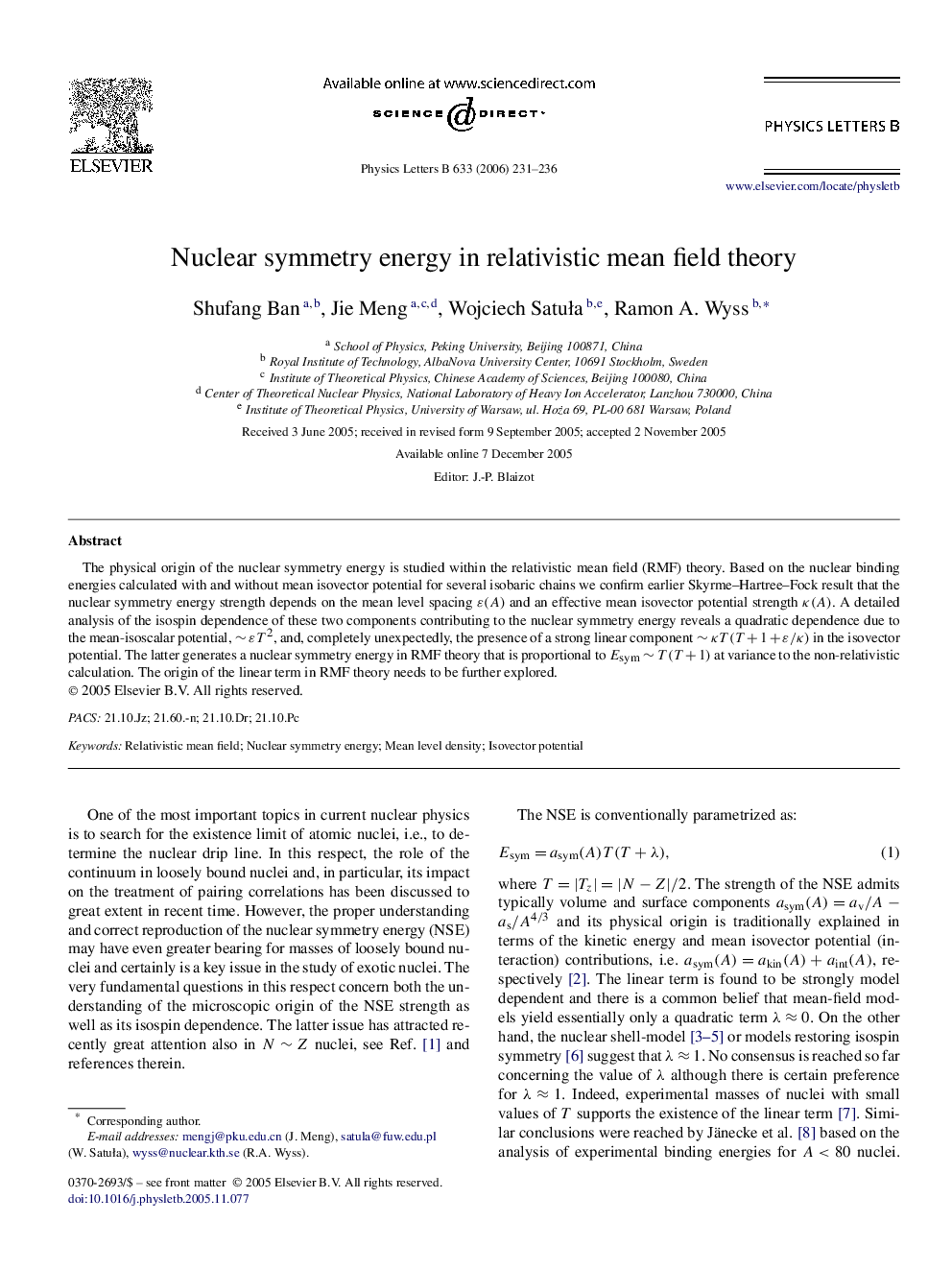| Article ID | Journal | Published Year | Pages | File Type |
|---|---|---|---|---|
| 8200317 | Physics Letters B | 2006 | 6 Pages |
Abstract
The physical origin of the nuclear symmetry energy is studied within the relativistic mean field (RMF) theory. Based on the nuclear binding energies calculated with and without mean isovector potential for several isobaric chains we confirm earlier Skyrme-Hartree-Fock result that the nuclear symmetry energy strength depends on the mean level spacing É(A) and an effective mean isovector potential strength κ(A). A detailed analysis of the isospin dependence of these two components contributing to the nuclear symmetry energy reveals a quadratic dependence due to the mean-isoscalar potential, â¼ÉT2, and, completely unexpectedly, the presence of a strong linear component â¼ÎºT(T+1+É/κ) in the isovector potential. The latter generates a nuclear symmetry energy in RMF theory that is proportional to Esymâ¼T(T+1) at variance to the non-relativistic calculation. The origin of the linear term in RMF theory needs to be further explored.
Related Topics
Physical Sciences and Engineering
Physics and Astronomy
Nuclear and High Energy Physics
Authors
Shufang Ban, Jie Meng, Wojciech SatuÅa, Ramon A. Wyss,
